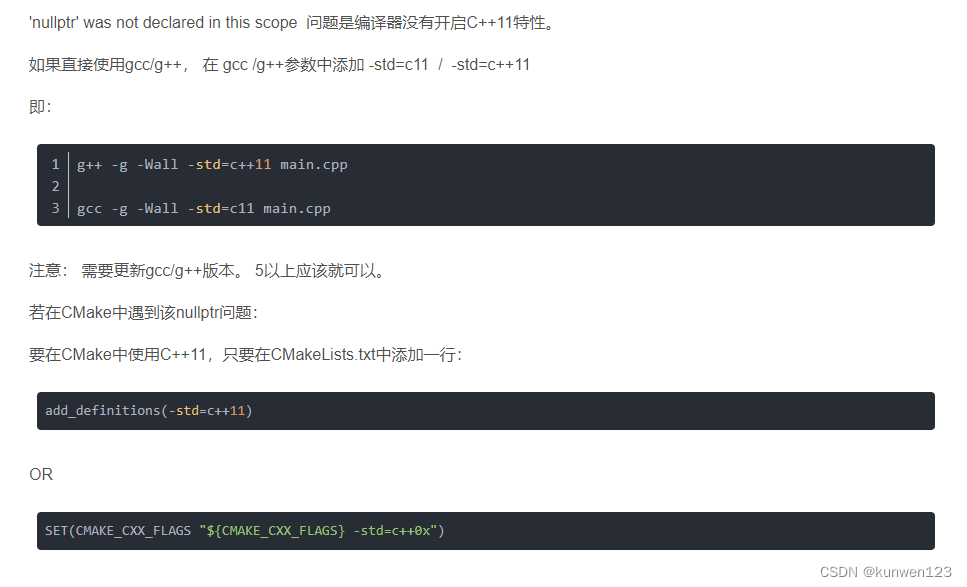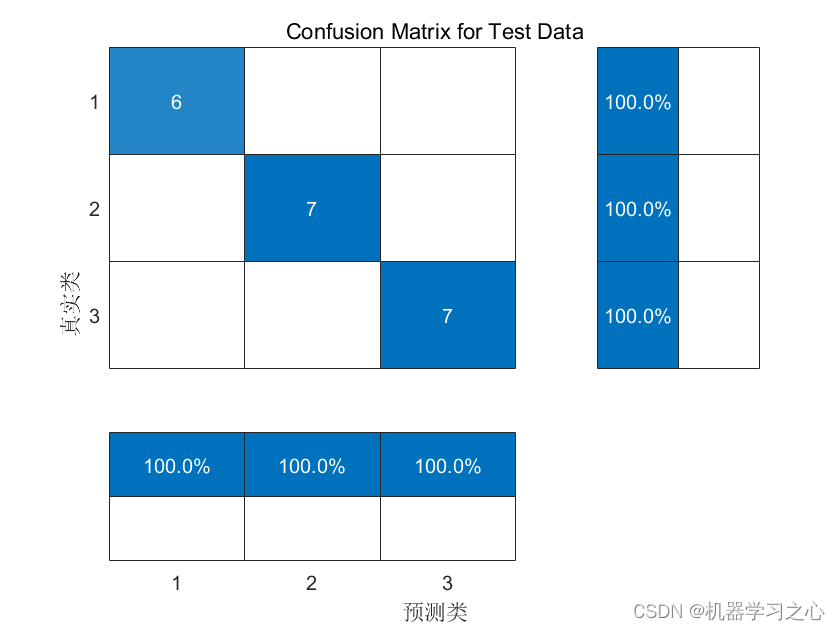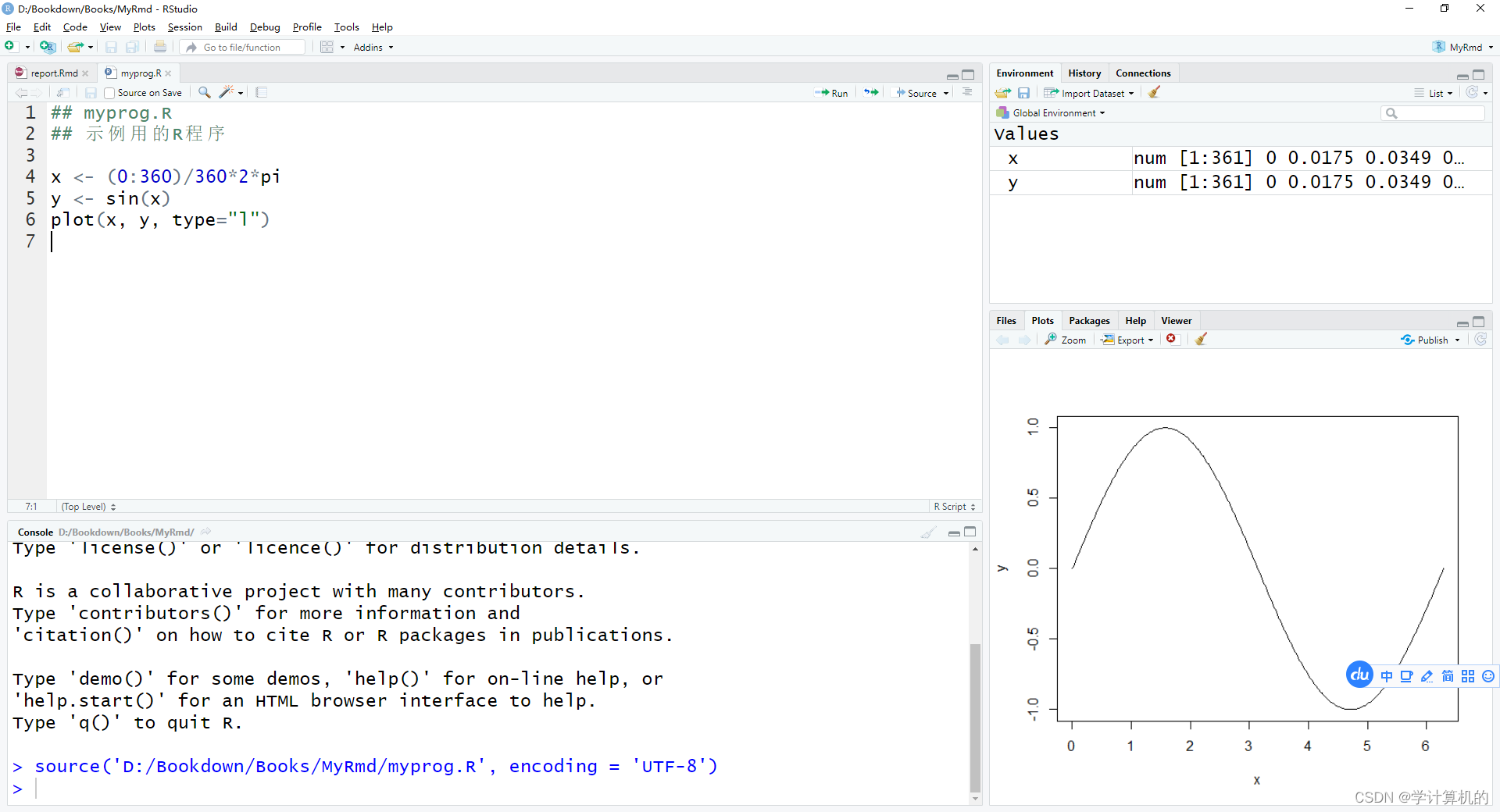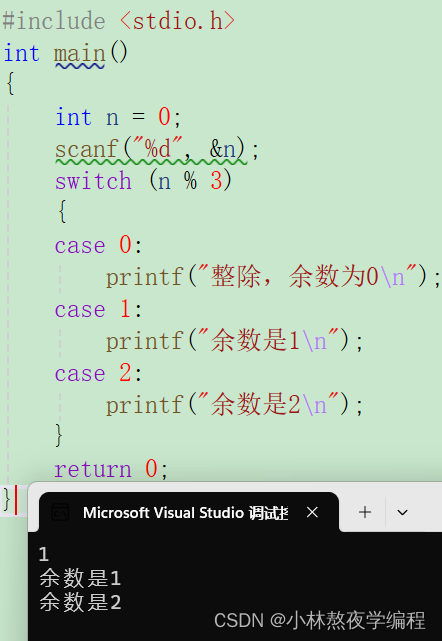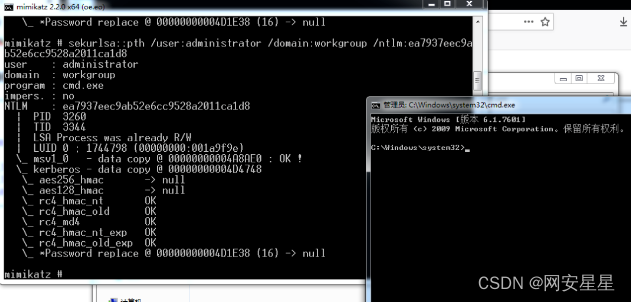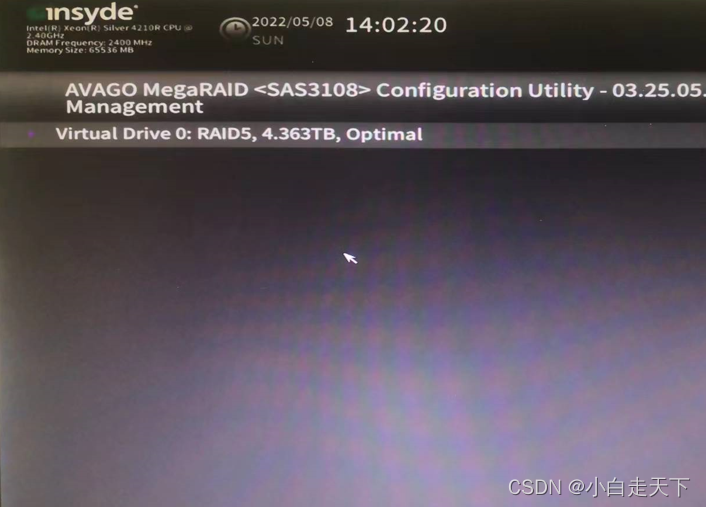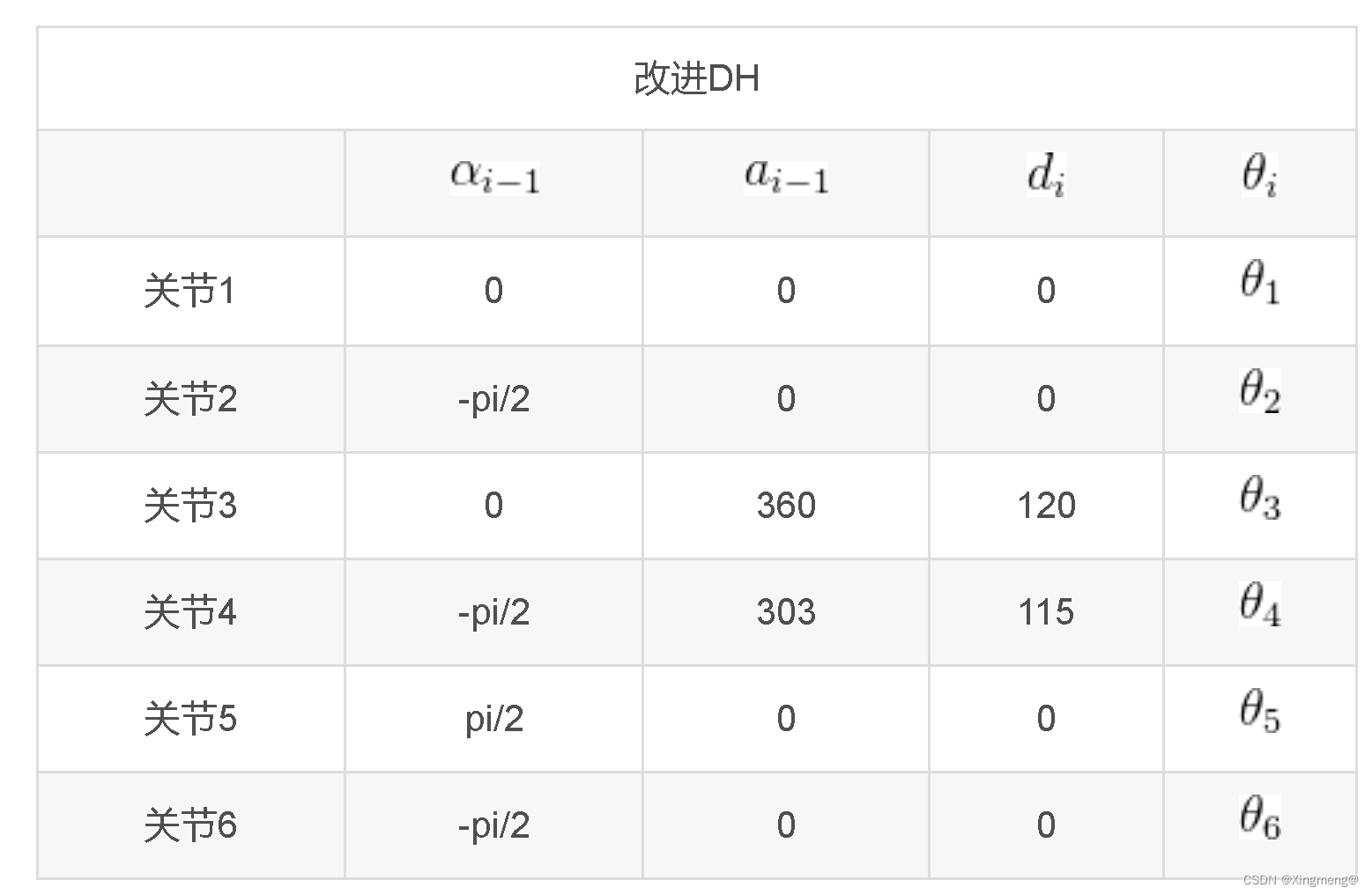本系列文章记录本人硕士阶段YOLO系列目标检测算法自学及其代码实现的过程。其中算法具体实现借鉴于ultralytics YOLO源码Github,删减了源码中部分内容,满足个人科研需求。
本篇文章在YOLOv5算法实现的基础上,进一步完成YOLOv7算法的实现。YOLOv7相比于YOLOv5,最主要的不同之处如下:
模型结构:引进了更为高效的特征提取模块(ELAN)、下采样模块(MP),不同的空间池化层(SPPCSPC),重参数卷积(RepConv)正样本匹配:结合YOLOv5中和正样本匹配方法和YOLOX中的正样本筛选方法(SimOTA)
文章地址:
YOLOv7算法实现(一):模型搭建
YOLOv7算法实现(二):正样本匹配(SimOTA)与损失计算
本文目录
- 0 引言
- 1 正样本匹配
- 2 损失计算
- 3 代码实现
- 3.1 正样本匹配
- 3.2 损失计算
0 引言
YOLOv7中的正样本匹配在YOLOv5的正样本匹配基础上进一步通过SimOTA对正样本进行筛选,损失计算流程如图1所示。

1 正样本匹配
YOLOv5的正样本匹配方法可见文章YOLOv5算法实现(四):损失计算。在YOLOv5正样本匹配方法中,在每一个feature_map上,根据目标中心点所在位置至多使用三个预测单元对目标进行匹配,在每一个预测单元中,根据宽高比至多使用三个Anchor对目标进行匹配,因此经过YOLOv5正样本匹配后,一个目标至多得到27个匹配样本。
SimOTA正样本筛选流程如下:
- 计算实际目标
nt与匹配样本nt_n的IoU损失:
p a i r _ w i s e _ i o u _ l o s s = − log ( i o u ) pair\_wise\_iou\_loss = - \log (iou) pair_wise_iou_loss=−log(iou) - 计算实际目标
nt与匹配样本nt_n的类别交叉熵损失:
p a i r _ w i s e _ c l s _ l o s s = − y log ( σ ( y p r e d ) ) − ( 1 − y ) log ( σ ( 1 − y p r e d ) ) pair\_wise\_cls\_loss = - y\log (\sigma ({y_{pred}})) - (1 - y)\log (\sigma (1 - {y_{pred}})) pair_wise_cls_loss=−ylog(σ(ypred))−(1−y)log(σ(1−ypred)) - 根据IoU损失总和确定每一个实际目标
nt的dynamic_k(每一个nt匹配的样本数量) - 计算匹配样本总损失:
p a i r _ w i s e _ l o s s = p a i r _ w i s e _ c l s _ l o s s + 3 p a i r _ w i s e _ i o u _ l o s s pair\_wise\_loss = pair\_wise\_cls\_loss + 3pair\_wise\_iou\_loss pair_wise_loss=pair_wise_cls_loss+3pair_wise_iou_loss - 根据总损失和
dynamic_k对匹配的正样本进行筛选
假设某目标(类别为3)在某训练批次中得到了7个匹配结果,其SimOTA正样本筛选示例如图2所示。

2 损失计算
YOLOv7中损失计算方式与YOLOv5一致,包含以下三个部分:
位置损失(仅计算正样本):
I o u L o s s = 1 − C I o U IouLoss = 1 - CIoU IouLoss=1−CIoU

类别损失(仅计算正样本):
C l s L o s s = ∑ i = 0 n f { 1 n ∑ j = 0 n [ 1 n c ∑ k = 0 k = n c ( y log ( σ ( p ) ) + ( 1 − y ) log ( 1 − σ ( p ) ) ) ] } ClsLoss = \sum\limits_{i = 0}^{nf} {\{ {1 \over n}\sum\limits_{j = 0}^n {[{1 \over {nc}}\sum\limits_{k = 0}^{k = nc} {({y}} } } \log (\sigma ({p})) + (1 - {y})\log (1 - \sigma ({p})))]\} ClsLoss=i=0∑nf{n1j=0∑n[nc1k=0∑k=nc(ylog(σ(p))+(1−y)log(1−σ(p)))]}置信度损失(所有样本):
O b j L o s s = ∑ i = 0 n f { 1 n a ∑ j = 0 n a [ 1 g r i d y × g r i d x ∑ m = 0 g r i d y ∑ n = 0 g r i d x ( y log ( σ ( p ) ) + ( 1 − y ) log ( 1 − σ ( p ) ) ) ] } ObjLoss = \sum\limits_{i = 0}^{nf} {\{ {1 \over {na}}\sum\limits_{j = 0}^{na} {[{1 \over {gridy \times gridx}}\sum\limits_{m = 0}^{gridy} {\sum\limits_{n = 0}^{gridx} {(y\log (\sigma (p)) + (1 - y)\log (1 - \sigma (p)))]} } } } \} ObjLoss=i=0∑nf{na1j=0∑na[gridy×gridx1m=0∑gridyn=0∑gridx(ylog(σ(p))+(1−y)log(1−σ(p)))]}
3 代码实现
3.1 正样本匹配
YOLOv5匹配方法
def find_3_positive(self, p, targets):
# Build targets for compute_loss(), input targets(num_gt,(image_index,class,x,y,w,h))
# input p (num_feature_map, bs, ba, y, x, (x, y, w, h, obj, classes)) 相对坐标
# na: 每个特征图上的anchors数量; nt: 当前训练图像的正样本个数
na, nt = self.na, targets.shape[0] # number of anchors, targets
indices, anch = [], []
# gain是为了后面将targets=[na, nt, t]中归一化了的xywh映射到相对feature map尺度上
# image_index + class + xywh + anchor_index
gain = torch.ones(7, device=targets.device).long()
ai = torch.arange(na, device=targets.device).float().view(na, 1).repeat(1, nt) # same as .repeat_interleave(nt)
# tagets [na, num_gt, (image_index,class,x,y,w,h, anchors_index)]
# 对一张特征图上的三个anchors均进行正样本匹配
targets = torch.cat((targets.repeat(na, 1, 1), ai[:, :, None]), 2) # append anchor indices
# 匹配的grid
g = 0.5 # bias
off = torch.tensor([[0, 0],
[1, 0], [0, 1], [-1, 0], [0, -1], # j,k,l,m
# [1, 1], [1, -1], [-1, 1], [-1, -1], # jk,jm,lk,lm
], device=targets.device).float() * g # offsets
# 对每一个尺度的features上的正样本进行匹配
for i in range(self.nl):
anchors = self.anchors[i] # 当前feature_map上的anchors绝对尺寸
# xyxy增益, 用于将targets中的(images_index, class, x, y, w, h, anchor_index)相对坐标转换为feature_map上的绝对坐标
gain[2:6] = torch.tensor(p[i].shape)[[3, 2, 3, 2]] # xyxy gain
t = targets * gain
if nt:
# 根据目标的wh和anchors的wh比例筛选匹配的anchors
r = t[:, :, 4:6] / anchors[:, None] # wh ratio
# torch.max(r, 1. / r).max(2) -> return: values, index
j = torch.max(r, 1. / r).max(2)[0] < self.hyp['anchor_t'] # compare
# j = wh_iou(anchors, t[:, 4:6]) > model.hyp['iou_t'] # iou(3,n)=wh_iou(anchors(3,2), gwh(n,2))
# 根据长宽比对正样本进行筛选
t = t[j]
# Offsets
gxy = t[:, 2:4] # gxy: 目标center相对左上角的偏置(用于选择左、上、左上grid)
gxi = gain[[2, 3]] - gxy # gxi: 目标center相对右下角的偏置(用于选择右、下、右下grid)
j, k = ((gxy % 1. < g) & (gxy > 1.)).T
l, m = ((gxi % 1. < g) & (gxi > 1.)).T
j = torch.stack((torch.ones_like(j), j, k, l, m))
# 将t复制5份, 用j筛选出需要保留的正样本
t = t.repeat((5, 1, 1))[j]
# [0, 0], [1, 0], [0, 1], [-1, 0], [0, -1]
# 构造所有正样本的偏置
offsets = (torch.zeros_like(gxy)[None] + off[:, None])[j]
else:
t = targets[0]
offsets = 0
# Define
b, c = t[:, :2].long().T # image indices, class
gxy = t[:, 2:4] # grid xy features_map上绝对坐标
gwh = t[:, 4:6] # grid wh
gij = (gxy - offsets).long() # 减去偏置获得匹配的grid坐标点
gi, gj = gij.T # grid xy indices
# Append
a = t[:, 6].long() # anchor indices
# image indices, anchor indices, gj, gi
indices.append((b, a, gj.clamp_(0, gain[3] - 1), gi.clamp_(0, gain[2] - 1)))
# 正样本对应的anchors大小, 当前features map上的绝对尺寸
anch.append(anchors[a]) # anchors
return indices, anch
SimOTA正样本筛选
def build_targets(self, p, targets, imgs):
'''
:param p: [feature_map indices, bs, ba, y, x, (x, y, w, h, obj, num_class)]回归参数
:param targets: [num_gt, (image_index, classes, x, y, w, h)]相对坐标
:param imgs: [num_img, 3, y, x]
'''
# indices: [feature_map indices, image indices list, anchor indices list, gj, gi]
# anch: 每个正样本对应的anchors大小(在对应feature map上的绝对坐标)
'''
1. 根据target中心点x, y确定作为正样本的cell(gj, gi);
根据target的w, h和anchors的长宽比确定每一个cell中进行匹配的anchor
indices: feature_map_list{image_indices_list, anchor indices_list, gj, gi}
anch: feature_map_list{anchor_size}
'''
indices, anch = self.find_3_positive(p, targets)
device = torch.device(targets.device)
'''
2. 根据OTA算法对上一步匹配的正样本进行进一步筛选
每一张图片实际目标数nt, 匹配到的对应正样本数n_gt
a.对每一个nt和每一个n_gt的预测结果计算其iou矩阵[nt, n_gt], 求出iou损失[nt, n_gt]
b.对每一个nt和每一个n_gt的预测结果计算其类别损失矩阵[nt, n_gt]
c.根据iou损失总和确定一个dynamic_k(每一个nt需要几个n_gt进行匹配)
d.计算cost矩阵(loss_iou + a * cls_iou)
e.根据cost矩阵和dynamic_k确定nt匹配的正样本所在feature_map, gj,gi,anchor
'''
matching_bs = [[] for pp in p] # images
matching_as = [[] for pp in p] # anchor
matching_gjs = [[] for pp in p] # gj
matching_gis = [[] for pp in p] # gi
matching_targets = [[] for pp in p] # 匹配的正样本
matching_anchs = [[] for pp in p] # 对应的anchors大小
nl = len(p) # 输出不同尺寸特征图数量
# 对每一张图片进行正样本匹配
for batch_idx in range(p[0].shape[0]):
b_idx = targets[:, 0] == batch_idx
this_target = targets[b_idx] # 获得当前图片的实际目标
if this_target.shape[0] == 0:
continue
# 得到在原图尺度的(x, y, w, h)绝对坐标 -> (xmin, ymin, xmax, ymax)
txywh = this_target[:, 2:6] * imgs[batch_idx].shape[1]
txyxy = xywh2xyxy(txywh)
pxyxys = [] # 预测的位置回归参数
p_cls = [] # 预测的类别置信度
p_obj = [] # 预测的目标置信度
from_which_layer = [] # 当前预测特征来自哪个feature_map
all_b = [] # image indices(所有特征图)
all_a = [] # anchor indices(所有特征图)
all_gj = [] # gj(所有特征图)
all_gi = [] # gi(所有特征图)
all_anch = [] # anchor size(所有特征图)
# 针对每个特征图匹配到的正样本进行OTA算法cost计算进一步对正样本进行筛选
for i, pi in enumerate(p):
b, a, gj, gi = indices[i] # image indices, anchor indices, gj gi
idx = (b == batch_idx) # 得到第一次匹配得到的属于当前图片的正样本
b, a, gj, gi = b[idx], a[idx], gj[idx], gi[idx] # image indices, anchor indices, gj gi
all_b.append(b) # 当前图片第i个输出特征图的匹配images
all_a.append(a) # 当前图片第i个输出特征图的匹配anchors indices
all_gj.append(gj) # 当前图片第i个输出特征图的匹配gj
all_gi.append(gi) # 当前图片第i个输出特征图的匹配gi
all_anch.append(anch[i][idx]) # 当前图片第i个输出特征图的匹配anchors大小(当前特征图上的绝对尺寸)
from_which_layer.append((torch.ones(size=(len(b),)) * i).to(device)) # 当前匹配的正样本来自哪个输出特征图
fg_pred = pi[b, a, gj, gi] # 当前匹配的正样本预测结果(x, y, w, h, obj, cls)
p_obj.append(fg_pred[:, 4:5]) # 预测目标置信度
p_cls.append(fg_pred[:, 5:]) # 预测类别类别
grid = torch.stack([gi, gj], dim=1)
# 预测结果(x, y)回归参数转换为原图的(x, y)绝对坐标
pxy = (fg_pred[:, :2].sigmoid() * 2. - 0.5 + grid) * self.stride[i] # / 8.
# pxy = (fg_pred[:, :2].sigmoid() * 3. - 1. + grid) * self.stride[i]
# 预测结果(w, h)回归参数转换为原图的(w, h)绝对坐标
pwh = (fg_pred[:, 2:4].sigmoid() * 2) ** 2 * anch[i][idx] * self.stride[i] # / 8.
# 预测结果(x, y, w, h)原图上的绝对坐标 -> (xmin, ymin, xmax, ymax)
pxywh = torch.cat([pxy, pwh], dim=-1)
pxyxy = xywh2xyxy(pxywh)
pxyxys.append(pxyxy)
pxyxys = torch.cat(pxyxys, dim=0) # 预测结果xyxy:原图上的绝对大小
if pxyxys.shape[0] == 0:
continue
p_obj = torch.cat(p_obj, dim=0) # 预测结果目标置信度
p_cls = torch.cat(p_cls, dim=0) # 预测结果类别置信度
from_which_layer = torch.cat(from_which_layer, dim=0) # 预测结果属于哪个feature_map
all_b = torch.cat(all_b, dim=0) # 预测结果属于batch中哪张图片
all_a = torch.cat(all_a, dim=0) # 预测结果属于哪个anchor
all_gj = torch.cat(all_gj, dim=0) # 预测结果属于哪个gj
all_gi = torch.cat(all_gi, dim=0) # 预测结果属于哪个gi
all_anch = torch.cat(all_anch, dim=0) # 预测结果的anchor大小(对应feature_map上的绝对大小)
# 计算pxyxy和txyxy的iou(均为原图上的实际大小)
# txytxt:[nt, 4], pxypxy:[np, 4] -> pair_wise_iou: [nt, np]
pair_wise_iou = box_iou(txyxy, pxyxys)
# iou损失
pair_wise_iou_loss = -torch.log(pair_wise_iou + 1e-8)
# 根据iou从大到小选取至多10个iou
top_k, _ = torch.topk(pair_wise_iou, min(10, pair_wise_iou.shape[1]), dim=1)
# 根据iou的总和确定dynamic_ks(每一个目标选择的匹配正样本数量), 至少会选择一个正样本对目标进行匹配
dynamic_ks = torch.clamp(top_k.sum(1).int(), min=1)
# 对当前图片的实际标签cls进行独热编码(对每一个nt进行扩充成和p一样的数量)
gt_cls_per_image = (
F.one_hot(this_target[:, 1].to(torch.int64), self.nc) # 对类别标签进行独热编码: [nt, nc]
.float()
.unsqueeze(1) # [nt, 1, nc]
.repeat(1, pxyxys.shape[0], 1) # [nt, n_gt, nc]
)
# 当前图片的实际目标个数, 对预测的置信度(类别置信度x目标置信度)进行扩充, 给每一个nt分配
num_gt = this_target.shape[0]
cls_preds_ = (
p_cls.float().unsqueeze(0).repeat(num_gt, 1, 1).sigmoid_()
* p_obj.unsqueeze(0).repeat(num_gt, 1, 1).sigmoid_()
)
y = cls_preds_.sqrt_()
pair_wise_cls_loss = F.binary_cross_entropy_with_logits(
torch.log(y / (1 - y)), gt_cls_per_image, reduction="none"
).sum(-1) # 计算类别损失
del cls_preds_
cost = (
pair_wise_cls_loss
+ 3.0 * pair_wise_iou_loss
)
matching_matrix = torch.zeros_like(cost, device=device)
# 确定每一个gt匹配的g_nt(根据cost和dynamic_k)
for gt_idx in range(num_gt):
_, pos_idx = torch.topk(
cost[gt_idx], k=dynamic_ks[gt_idx].item(), largest=False
)
matching_matrix[gt_idx][pos_idx] = 1.0
del top_k, dynamic_ks
# 当同一个gt匹配了多个t时, 根据cost选择gt对哪一个t进行匹配
anchor_matching_gt = matching_matrix.sum(0)
if (anchor_matching_gt > 1).sum() > 0:
_, cost_argmin = torch.min(cost[:, anchor_matching_gt > 1], dim=0)
matching_matrix[:, anchor_matching_gt > 1] *= 0.0
matching_matrix[cost_argmin, anchor_matching_gt > 1] = 1.0
fg_mask_inboxes = (matching_matrix.sum(0) > 0.0).to(device) # 保留匹配到的正样本
matched_gt_inds = matching_matrix[:, fg_mask_inboxes].argmax(0) # 每一个gt匹配的实际目标索引
# 保留OTA算法进一步匹配到的结果
from_which_layer = from_which_layer[fg_mask_inboxes]
all_b = all_b[fg_mask_inboxes]
all_a = all_a[fg_mask_inboxes]
all_gj = all_gj[fg_mask_inboxes]
all_gi = all_gi[fg_mask_inboxes]
all_anch = all_anch[fg_mask_inboxes]
this_target = this_target[matched_gt_inds]
# 将每一个feature_map的预测结果分开
for i in range(nl):
layer_idx = from_which_layer == i
matching_bs[i].append(all_b[layer_idx])
matching_as[i].append(all_a[layer_idx])
matching_gjs[i].append(all_gj[layer_idx])
matching_gis[i].append(all_gi[layer_idx])
matching_targets[i].append(this_target[layer_idx])
matching_anchs[i].append(all_anch[layer_idx])
# 将所有图片匹配到的正样本进行合并
for i in range(nl):
if matching_targets[i] != []:
matching_bs[i] = torch.cat(matching_bs[i], dim=0)
matching_as[i] = torch.cat(matching_as[i], dim=0)
matching_gjs[i] = torch.cat(matching_gjs[i], dim=0)
matching_gis[i] = torch.cat(matching_gis[i], dim=0)
matching_targets[i] = torch.cat(matching_targets[i], dim=0)
matching_anchs[i] = torch.cat(matching_anchs[i], dim=0)
else:
matching_bs[i] = torch.tensor([], device='cuda:0', dtype=torch.int64)
matching_as[i] = torch.tensor([], device='cuda:0', dtype=torch.int64)
matching_gjs[i] = torch.tensor([], device='cuda:0', dtype=torch.int64)
matching_gis[i] = torch.tensor([], device='cuda:0', dtype=torch.int64)
matching_targets[i] = torch.tensor([], device='cuda:0', dtype=torch.int64)
matching_anchs[i] = torch.tensor([], device='cuda:0', dtype=torch.int64)
return matching_bs, matching_as, matching_gjs, matching_gis, matching_targets, matching_anchs
3.2 损失计算
class ComputeLossOTA:
# Compute losses
def __init__(self, model, autobalance=False):
super(ComputeLossOTA, self).__init__()
device = next(model.parameters()).device # get model device
h = model.hyp # hyperparameters
# Define criteria
BCEcls = nn.BCEWithLogitsLoss(pos_weight=torch.tensor([h['cls_pw']], device=device))
BCEobj = nn.BCEWithLogitsLoss(pos_weight=torch.tensor([h['obj_pw']], device=device))
# Class label smoothing https://arxiv.org/pdf/1902.04103.pdf eqn 3
self.cp, self.cn = smooth_BCE(eps=h.get('label_smoothing', 0.0)) # positive, negative BCE targets
# Focal loss
g = h['fl_gamma'] # focal loss gamma
if g > 0:
BCEcls, BCEobj = FocalLoss(BCEcls, g), FocalLoss(BCEobj, g)
m = model.model[-1] # Detect() module
self.balance = {3: [4.0, 1.0, 0.4]}.get(m.nl, [4.0, 1.0, 0.25, 0.06, .02]) # P3-P7
self.ssi = list(m.stride).index(16) if autobalance else 0 # stride 16 index
self.BCEcls, self.BCEobj, self.gr, self.hyp, self.autobalance = BCEcls, BCEobj, 1.0, h, autobalance
self.na = m.na # anchors数量
self.nc = m.nc # 类别数量
self.nl = m.nl # 输出特征层数量
self.anchors = m.anchors # anchors [3, 3, 2], 缩放到feature map上的anchors尺寸
self.stride = m.stride # 输出特征图在输入特征图上的跨度
self.device = device # 数据存储设备
def __call__(self, p, targets, imgs): # predictions, targets, model
'''
正样本匹配, 计算损失
:param p: [num_feature_map, batch_size, num_anchors, y, x, (x + y + w + h + obj + num_class)]
:param targets: [num_gt, (image indices, classes, x, y, w, h)]
:param imgs: [num_img, 3, y, x]
'''
device = targets.device
# 分类损失, 位置损失, 置信度损失
lcls, lbox, lobj = torch.zeros(1, device=device), torch.zeros(1, device=device), torch.zeros(1, device=device)
'''
正样本匹配:
1. 根据target中心点x, y确定作为正样本的cell(gj, gi);
根据target的w, h和anchors的长宽比确定每一个cell中进行匹配的anchor
input:[nt, 6] output:[nt*cell_num*anchor_num, 6];
2. 根据Optimal Transport Assignment(OTA)算法对上一步筛选出来的正样本计算cost进一步对正样本进行筛选;
bs: 正样本匹配的images indices; as_: 正样本匹配的anchor索引; gjs, gis: 预测该正样本的gj, gi
targets: 该正样本匹配的实际target(image indices, class, x, y, w, h)相对坐标
anchors: 正样本的anchors大小(对应特征图上的绝对大小)
'''
bs, as_, gjs, gis, targets, anchors = self.build_targets(p, targets, imgs)
# 预测结果的x, y, w, h增益(feature_map)
pre_gen_gains = [torch.tensor(pp.shape, device=device)[[3, 2, 3, 2]] for pp in p]
# 根据匹配的正样本计算Losses
for i, pi in enumerate(p): # layer index, layer predictions
b, a, gj, gi = bs[i], as_[i], gjs[i], gis[i] # image, anchor, gridy, gridx
tobj = torch.zeros_like(pi[..., 0], device=device) # target obj
n = b.shape[0] # 匹配到的正样本数量
if n:
ps = pi[b, a, gj, gi] # 预测结果(x, y, w, h, obj, classes)
# 预测结果进行回归
grid = torch.stack([gi, gj], dim=1)
pxy = ps[:, :2].sigmoid() * 2. - 0.5
# pxy = ps[:, :2].sigmoid() * 3. - 1.
pwh = (ps[:, 2:4].sigmoid() * 2) ** 2 * anchors[i]
pbox = torch.cat((pxy, pwh), 1) # 预测box(回归到对应feature_map尺度)
selected_tbox = targets[i][:, 2:6] * pre_gen_gains[i] # 转换到feature_map尺度
selected_tbox[:, :2] -= grid
iou = bbox_iou(pbox, selected_tbox, CIoU=True).squeeze() # iou(prediction, target)
lbox += (1.0 - iou).mean() # iou损失
# 目标置信度(根据iou给正样本标签分配, 负样本标签为0)
tobj[b, a, gj, gi] = (1.0 - self.gr) + self.gr * iou.detach().clamp(0).type(tobj.dtype) # iou ratio
# 类别标签
selected_tcls = targets[i][:, 1].long()
if self.nc > 1: # 分类损失(含有多个类别时), 仅计算正样本的
t = torch.full_like(ps[:, 5:], self.cn, device=device) # 负样本标签cn
t[range(n), selected_tcls] = self.cp # 正样本标签cp
lcls += self.BCEcls(ps[:, 5:], t) # BCE
# Append targets to text file
# with open('targets.txt', 'a') as file:
# [file.write('%11.5g ' * 4 % tuple(x) + '\n') for x in torch.cat((txy[i], twh[i]), 1)]
obji = self.BCEobj(pi[..., 4], tobj)
lobj += obji * self.balance[i] # obj loss
if self.autobalance:
self.balance[i] = self.balance[i] * 0.9999 + 0.0001 / obji.detach().item()
if self.autobalance:
self.balance = [x / self.balance[self.ssi] for x in self.balance]
lbox *= self.hyp['box']
lobj *= self.hyp['obj']
lcls *= self.hyp['cls']
bs = tobj.shape[0] # batch size
loss = lbox + lobj + lcls
# return loss * bs, torch.cat((lbox, lobj, lcls, loss)).detach()
return {"box_loss": lbox,
"obj_loss": lobj,
"class_loss": lcls}


